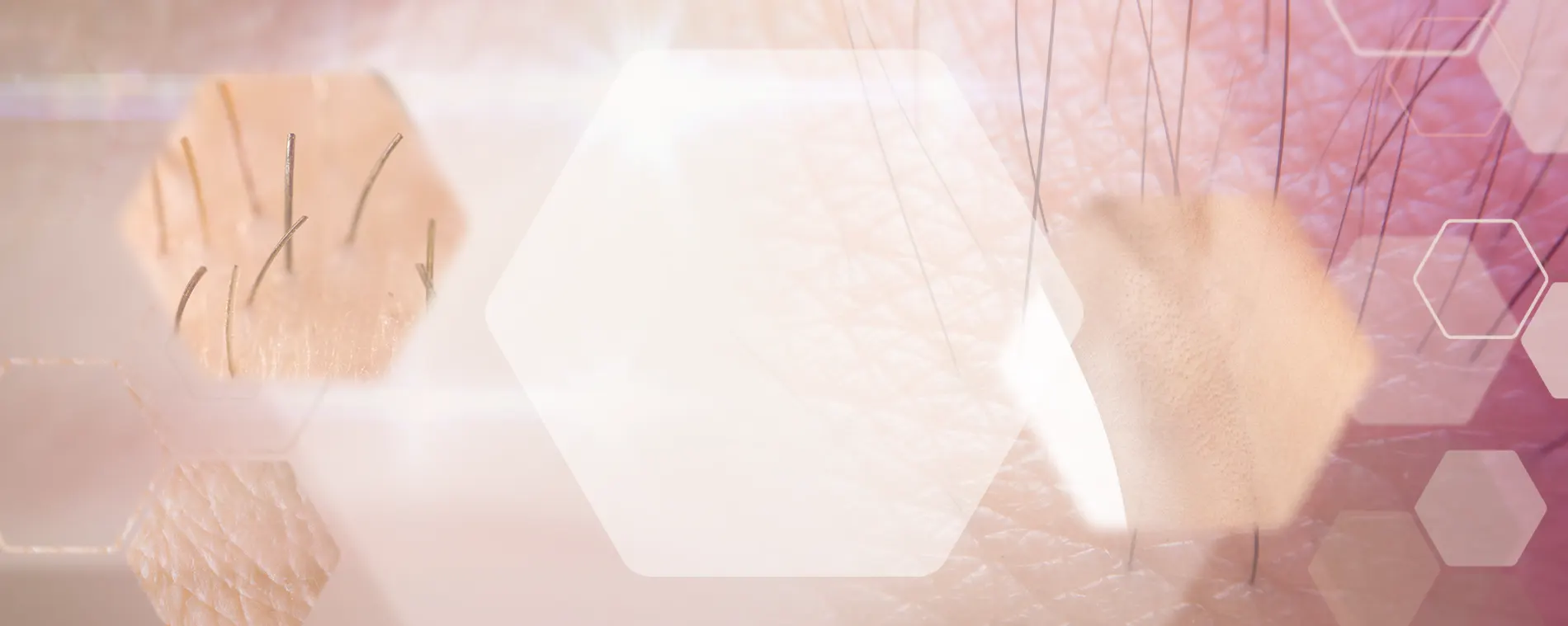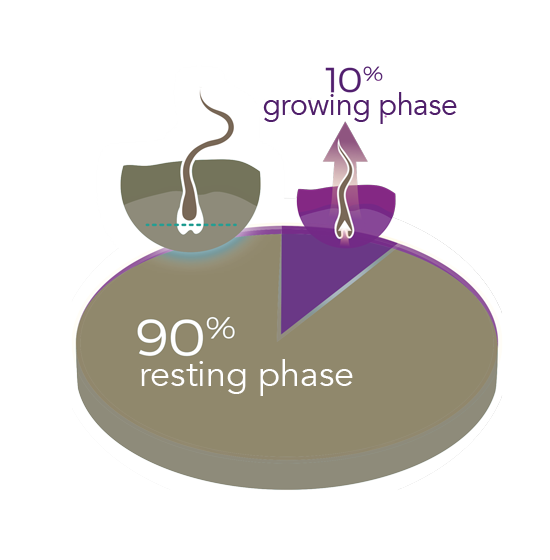
Growth cycle
of hair
Every hair has its own pace of growing
Hair cycles
The individual phases of hair growth
A hair grows about 10 mm within a month. Each hair goes through several cycles during its growth phase. The phases that are important for us are the resting phase (telogen phase) and the active phase (anagen phase). During the resting phase, the hair is not connected to the hair follicle and therefore, not supplied with nutrients. It rests and does not grow during this phase. In the active phase, the hair is connected to the hair follicle and supplied with nutrients, so it grows.
The growth & resting phase
A good treatment is only possible when the individual hair is in the active phase. The connection of the hair to the follicle allows the light of XENOgel® Technology to reach the hair follicle and denature it. Consequently, nutrients can no longer supply the hair follicle, and the hair falls out.
Only 10% of all body hairs are in the active growth phase. The remaining 90% of hairs are in the resting phase. Each hair is in the anagen growth phase for about 4 weeks, 6 weeks, or 8 weeks. After that, it is in the telogen resting phase for approximately 9×4 weeks, 9×6 weeks, or 9×8 weeks. Each hair also has its own cycle.

Why are hairs in different stages of growth?
Hairs are in different growth phases because they follow a natural cycle. This cycle allows the body to regularly renew and replace hairs. Since not all hairs are in the same phase at the same time, their growth and resting periods vary, leading to different phases of hair growth. Each of these phases has its own characteristic features and functions. During the anagen phase, the hair grows actively, while in the catagen phase, it stops growing and prepares to fall out of the skin. Finally, the hair rests in the telogen phase before falling out and the cycle starts anew. This complex sequence of phases ensures a continuous process of hair regeneration and renewal in the human body.
Keep the treatment rhythm
The individual phases of hair growth must be taken into account during the treatment. Once the hair removal treatment has begun, it is extremely important to consider these growth cycles. If you have already planned longer breaks such as vacations or training courses, you should definitely take these into account. Learn more about why it is so important to stick to the rhythm here.
The different treatment cycles
The cycle to be adhered to varies depending on the body region.
4 weeks: armpit, bikini, intimate zone and intergluteal fold
6 weeks: feet, thigh, lower leg, chest, abdomen, buttocks, coccyx, back, shoulder, neck, upper arm, forearm, hands
8 weeks face, throat, upper lip, chin, head
Why is it so important to comply with the growth cycles?
Example of hair distribution in growth phases
On an area of 10 cm2, for instance, there are 1000 hairs. Consequently, 900 hairs are in the resting phase, and 100 are in the growing phase, with a cycle of 4 weeks in this example. Every 4 weeks, another 10% of the hairs are in the growth phase. Therefore, it is essential to adhere to the treatment cycles to be able to remove ALL hairs in the respective region. If this cycle is interrupted, it becomes impossible to predict which hairs will be in the active phase next. The entire process has to start more or less from the beginning. Consequently, significantly more treatments will be necessary to permanently* remove hair from the desired region.

